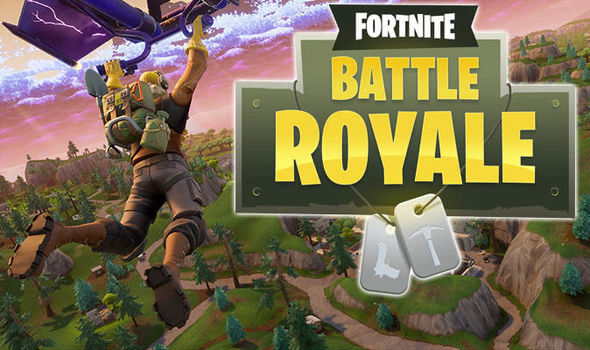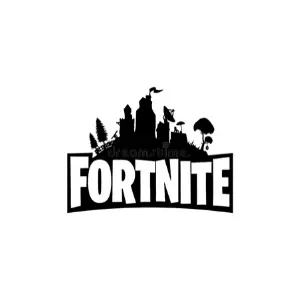How Do Free Games Like Fortnite Make Money?
In the year 2018, Fortnite made a whopping $2.4 Billion in revenue — the most annual revenue for any game in the history of the gaming industry, a record which is yet to be broken.
Despite that, Fortnite accounted only for 2.2% of the gaming industry's 2018 annual global revenue, which stood at $109 Billion.
Many among us might not realize this, but the gaming industry has grown to become the largest subset of the entertainment industry.
Even bigger than the movie & music industry, both of which combined made $60.8 Billion globally in 2018.
Around 80% of the total gaming industry revenue in 2018 and 2019 was attributed to the free-to-play business model — which is also employed by Fortnite.
In this blog, we will dig deeper into Fortnite — running you through how it became a cultural phenomenon and its business model in detail.
How Fortnite become a cultural phenomenon
Developed by Epic Games, one of the biggest names in the gaming industry, Fortnite had been under construction for more than half a decade.
Launched as an early access title in July 2017, the first game mode, called 'Fortnite Save the world', didn't exactly set the video-gaming world ablaze.
And it wasn't until Fortnite launched another gaming mode that it became a global phenomenon.
( Let's go back a little to establish context for the launch of Fortnite's new gaming mode )
Four months before Fortnite's launch, a PC game, called 'PUBG' had started getting traction, mostly led by word of mouth and streamers on sites like Twitch ( a user-generated video platform similar to YouTube, but for video games) .
Inspired by the plot of a Japanese novel called "'Battle Royale", PUBG introduced a new gaming mode, using the same name as the novel.
The new gaming mode was unique — 100 players landed on a large island from a parachute, scavenging weapons and hunting each other until only one of them was left alive.
And as time progressed in the game, a contracting circular border forced players to go head to head with each other.
The success of PUBG reached the ears of top game companies soon & it was only a matter of time before they would try to replicate the new gaming mode.
Epic Games, the company behind Fortnite was well-positioned to do so.
Besides being famous for making games, Epic Games is also known for creating the unreal engine, video-game code which it licenses mainly to other game developers.
Being platform-agnostic, the unreal engine can be used to create games for PC, gaming consoles and mobile phones, a capability that would prove crucial to Fortnite's success.
Two months after the launch of the original Fortnite, Epic released a new free-to-play gaming mode called "Fortnite Battle Royale", which was essentially a copy of PUBG, but with some tweaks.

While PUBG is more like a military game, Fortnite has a cartoonish feel to it, which is one of the reasons why it went mainstream.
Made by a smaller team that didn't have years of experience backing them, PUBG was still a game in progress even though it had become popular quickly.
On the other hand was EPIC Games, having decades of experience in building games, privileged access to the unreal engine and a near-fit game for the popular "Battle Royale" gaming mode.
Not only that, but Fortnite was also available on consoles like Xbox & Playstation — the most popular hardware for gaming.
PUBG would not be available for consoles until the end of 2017, and even when it did, it was still a work in progress.
Due to the advantages it had over PUBG, Fortnite Battle Royale managed to make a whopping $1.2 Billion in 10 months, despite the game fundamentally being free to play (we'll get into how it makes money later ).
In Dec 2018, Epic Games launched another gaming mode calledFortnite Creative.
Unlike Battle Royale, where the last man standing wins, Fortnite Creative emphasizes on building more than battling by putting players on an island where they are given the freedom to create battle arenas, racecourses, performing challenges and more.
By March 2019, around 250 million people were playing Fortnite, up 25% from 200 million players in November 2018.
So how does Fortnite Make Money
As we've learnt above, Fortnite has three gaming modes — all of which have different monetization strategies. Other than that, Fortnite also makes money from virtual tournaments and selling merchandise.
Let's have a look at each of the monetization methods:
Fortnite Battle Royale
As we said earlier, Fortnite Battle Royale is free to play.
Players never have to spend a dime if they don't want to but still close to 70% players choose to make in-game purchases to access dance moves and skins, which are outfits and accessories.
What's incredible is that none of these outfits and accessories gives players any kind of advantage in the Fortnite World.
All these elements do is make paying players look different than the non-paying players, enticing more non-paying one's to make purchases.
To nudge more players to buy, Fortnite creates a sense of urgency by giving access to in-app purchases only for a limited window of time.
In-app purchases can be made only by Fortnite's in-game currency called V-bucks.
Here's how much V-Bucks cost in USD
- 1,000 V-Bucks for $9.99
- 2,500 (+300 Bonus) V-Bucks for $24.99
- 6000 (+1,500 Bonus) V-Bucks for $59.99
- 10,000 (+3,500 Bonus) V-Bucks for $99.99
V-Bucks can also be used to buy the Battle Passes, which unlock rewards dependent on the season.
While everyone's level resets at the start of a season, Battle Passes unlocks access to new accessories and items, which cost extra.
It's important to re-emphasize here that none of these new rewards give you an advantage in playing the game — they just make you look different.
Fortnite Save the World
When Fortnite Save the World was launched as an early access game in July 2017, it made money the old school way — charging players $40 upfront to buy the game.
While there were rumours that Save the World would eventually become 'free to play', Epic Games chose to stick to 'pay to play' model when it dropped the early access label on 30th June 2020.
Fortnite Creative
At the time of Launch, Fortnite Creative's access was limited to players who had purchased a Battle Pass.
After a week, Fortnite creative was opened up to everyone for free, giving players the power to design customized islands.
In March 2020, Fortnite announced that players could submit islands created by them to Fortnite, which would be reviewed and featured in the game if selected.
In the submission guidelines, Epic Games mentioned, "Epic has the right to make use of anything you submit to us for any purpose, including for commercial purposes, without any compensation or notification to, or permission from, you."
To us, it seems like Fortnite could either make these featured islands paid to access or use them in any other way to compensate for keeping the game free to play
Fortnite World Cup
Fortnite's popularity is such that not only do people play the game, but they also watch players playing for hours at a stretch, on Twitch as well as YouTube
In October 2018 alone, the game was viewed for 67.7 million hours on Twitch (the second-highest total), and 42.4 million hours on YouTube (the highest figure)
A creator by the name Ninja reportedly earns $500,000/month from streamingFortnite over YouTube and Twitch.
With such a community of highly engaged fans built around game, the Fortnite World Cup is simply another way to cash in on the attention.
In July 2019, Epic Games held the first Fortnite in the famous Arthur Ashe Stadium in New York, which is typically reserved for US Open tennis tournament.
40 million players participated in Fortnite World Cup, After several rounds of elimination, the stadium event pitted the 100 best players against each other in the finale.
Overall, the tournament had a $30 million prize pool. At the end, a 16-year-old player by the name of Bugha" won a $3 million first-place prize.
While the economics of this event aren't publically available, we're guessing the earned media the event generated might have been more than enough for Epic Games.
It is estimated that 2 million people watched the event live & videos showing highlights have been viewed over millions of times, other than the coverage the event got from major news outlets
Merch
A popular business strategy that is self-explanatory, the only point worth mentioning is that not only does Epic Games sell Fortnite branded apparel, it also sells other branded products like toys, speakers etc.
Fortnite's Decline In Sales
As we mentioned at the beginning of the blog, Fortnite made a whopping $2.4 Billion in 2018.
However, according to a report by Superdata, the company's sales dropped to $1.8 Billion in 2019, which could mean that Fortnite may be well past its peak.
Will Epic Games be able to increase sales Fortnite in 2020 with new updates?
We'll have to wait and watch.
Thank you for taking the time to read the entire article.
If you liked it, you might also like our article on Zoom's Business Model.
Summary

Article Name
Fortnite Business Model: How Fortnite Makes Money
Description
Fortnite has three gaming modes -- all of which have different monetization strategies. Other than that, Fortnite also makes money from virtual tournaments and selling merchandise.
Author
Muaaz Qadri
Publisher Name
WhatIsTheBusinessModelOf
How Do Free Games Like Fortnite Make Money?
Source: https://whatisthebusinessmodelof.com/business-models/how-fortnite-makes-money/
Posted by: savoiecapand.blogspot.com

0 Response to "How Do Free Games Like Fortnite Make Money?"
Post a Comment